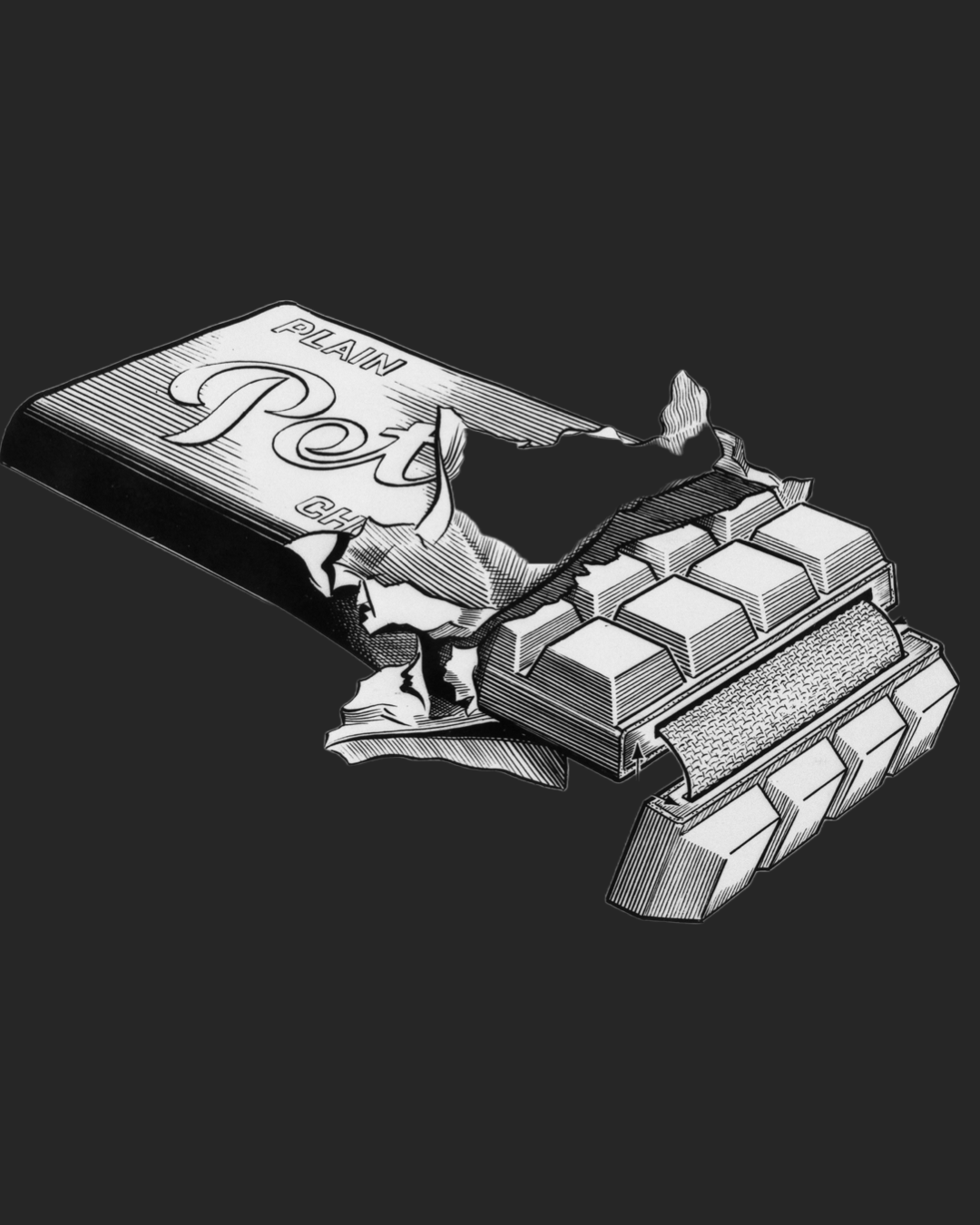 Chocolate has long been associated with indulgence, comfort, and luxury. From ancient Mesoamerican civilizations that revered it as the "food of the gods" to the extravagant confections of European aristocracy, chocolate has captivated the senses for centuries. Its rich aroma, velvety texture, and ability to uplift moods make it one of the most beloved treats worldwide. However, beneath its celebrated sweetness lies a darker, more sinister history.
Chocolate has long been associated with indulgence, comfort, and luxury. From ancient Mesoamerican civilizations that revered it as the "food of the gods" to the extravagant confections of European aristocracy, chocolate has captivated the senses for centuries. Its rich aroma, velvety texture, and ability to uplift moods make it one of the most beloved treats worldwide. However, beneath its celebrated sweetness lies a darker, more sinister history.
Throughout the ages, chocolate has been manipulated as a tool of deception, treachery, and even murder. Whether wielded as a weapon of political intrigue, a method of personal vengeance, or a tool of espionage, this seemingly innocent delight has occasionally been transformed into an instrument of deadly intent.
Here, we journey through ten chilling accounts where chocolate became an agent of harm and betrayal, reminding us that even the sweetest indulgences can conceal bitter secrets.
1. The Deadly Choice in Spain

In a tragic tale of love turned sour, a heartbroken "lady of quality" in Spain offered her estranged lover an ominous choice: a dagger or a cup of poison-laced chocolate. The man, unaware of the fatal concoction, drank the chocolate and met an untimely demise—an elegant yet deadly act of vengeance.
2. Catherine de Medici's "Harmalades"
The 16th-century French queen consort, Catherine de Medici, was notorious for her alleged use of poison to eliminate political enemies. She reportedly favoured small, poisoned chocolate-filled candies known as "harmalades," which she used to rid herself of those who stood in her way.
3. The Marquise de Brinvilliers’ Poisonous Plot
One of the most infamous poisoners of the 17th century, the French noblewoman Marquise de Brinvilliers, devised a gruesome plan to secure her family’s fortune. She systematically poisoned her father and brothers by lacing their chocolates with arsenic, an act that eventually led to her public execution in 1676.
4. The Bishop's Last Cup
Clergyman Thomas Gage recorded a tale from 17th-century Chiapa Real (modern-day Mexico) in which a bishop who forbade people from eating or drinking during Mass met a grim fate. Displeased with his strict decree, unknown conspirators poisoned his cup of hot chocolate, ensuring his sudden and suspicious demise.
5. The Brighton Chocolate Cream Poisoner
In the 1870s, Brighton, England, was shaken by a series of poisonings that left several people seriously ill and one child dead. The culprit, Christiana Edmunds, had a vendetta against a local confectioner, John Maynard. She tampered with chocolate creams by adding strychnine before returning them to the shop for unsuspecting customers. Edmunds became Britain’s first convicted serial poisoner and was sent to Broadmoor Hospital for the criminally insane.
6. The Sinister "Tafel Confect"
Ludwig Roselius, a German chocolatier, developed a grim creation in 1907—a chocolate infused with poison, known as "Tafel Confect." Intended for suicide, this unsettling confection revealed a macabre use of chocolate beyond its traditional pleasure.
7. The Arsenic-Laced Chocolate Creams
The United States experienced a chilling case in the 1920s when chocolates injected with arsenic were placed back on store shelves. Unknowing customers consumed the tainted treats, leading to illness and death, highlighting the vulnerabilities of food safety in public consumption.
8. Operation Clausewitz: Churchill’s Narrow Escape
Declassified MI5 files have unveiled a sinister Nazi plot during World War II. Operation Clausewitz was a German scheme to assassinate Winston Churchill using a booby-trapped chocolate bar.
The plan involved coating the chocolate with an explosive substance and delivering it to Churchill. Fortunately, the plot was discovered before it could be executed.
9. The CIA’s Poisonous Plan for Castro
A former Cuban intelligence chief revealed that during the Cold War, the CIA devised an assassination attempt on Fidel Castro using a poison-laced chocolate milkshake. Though many attempts were made on Castro’s life, this particular scheme never came to fruition.
10. Graham Young: The Chocolate Poisoner
One of Britain’s most notorious 20th-century serial killers, Graham Young, experimented with poisons from an early age. He used chocolate laced with thallium to poison those around him, causing slow and agonising deaths. His morbid fascination with toxicology eventually led to his arrest and life imprisonment.
 Unwrapping the Darker Side of Chocolate
Unwrapping the Darker Side of Chocolate
Throughout history, chocolate has been revered as a symbol of joy and celebration. Yet, these chilling accounts reveal that it has also been weaponised for revenge, espionage, and murder. While today’s chocolate remains a beloved treat, these dark tales serve as a haunting reminder that even the most delightful indulgences can carry a hidden sting.
As we unwrap each layer of chocolate’s history, we find that it is not just a confection but a cultural artefact, capable of both delight and destruction. These sinister stories challenge our perception of a treat so often associated with warmth and affection. Though the risks of poisoned chocolate are largely a thing of the past, the lessons remain: what we consume—and whom we trust—can sometimes hold more than just sweetness.
Perhaps the next time you indulge in a bar of chocolate, you’ll take a moment to reflect on its storied past. From emperors to assassins, chocolate has played a role in shaping history, for better or for worse. But fear not—today’s chocolate industry is governed by stringent safety standards, ensuring that the only danger you face is overindulgence. Still, history whispers its warnings, reminding us that even the most innocent of pleasures can harbour a shadowy past.

